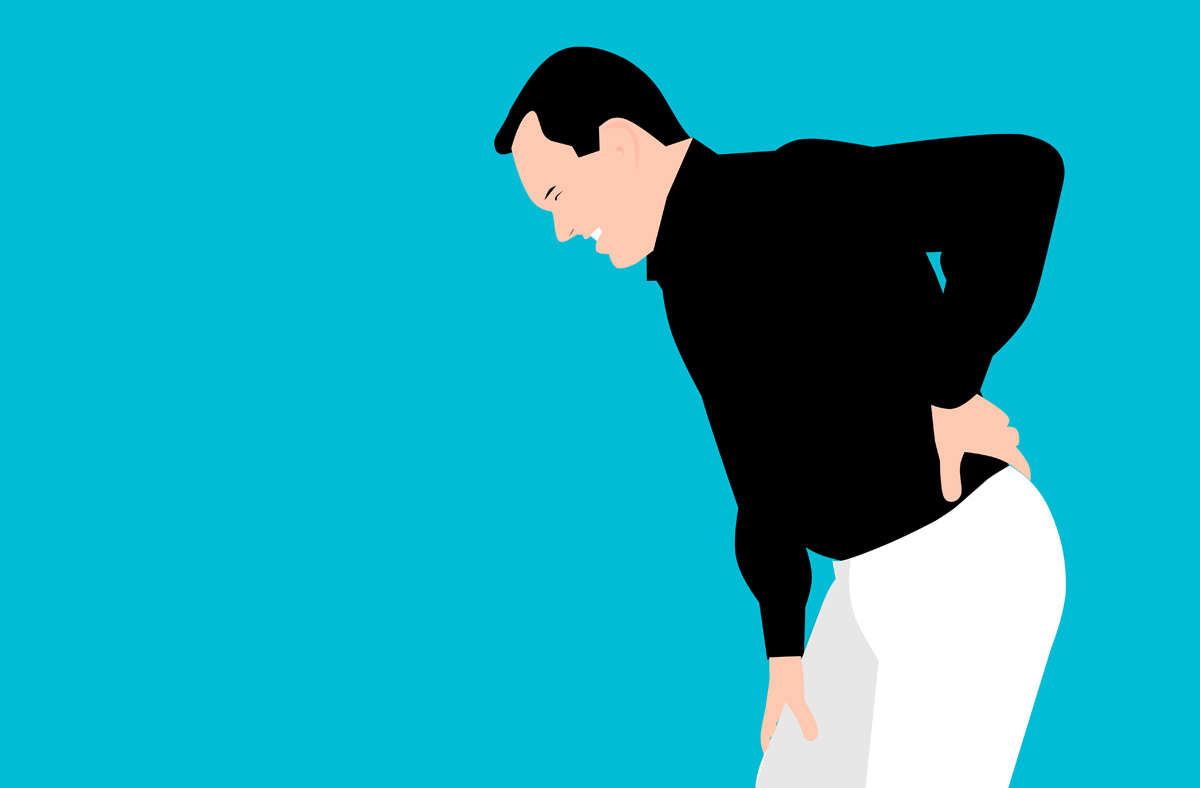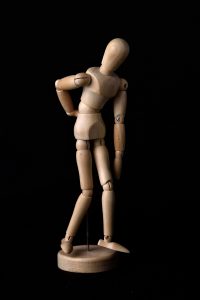 Do You Suffer with Low Back Pain?
Do You Suffer with Low Back Pain?
The visual that comes to mind when thinking of low back pain is a person half-bent over with a hand on the sore spot of their back. Many of us have experienced low back pain, and you may recall feeling severely limited or even helpless during the acute phase of your last episode. Feelings of pain and helplessness are some of the reasons why low back pain is one of the most common causes for patients to seek emergency care! In fact, over 80% of people have experienced at least one episode of low back pain in their lives, and up to a quarter of adults have experienced low back pain in the last three months!
On top of this, chronic low back pain is considered the second most common form of disability worldwide, and one of the most common causes for adults to see a family physician. In the past, patients were quickly imaged with an x-ray or MRI, told to “take it easy”, and prescribed medication to mask the pain. They may have even been prescribed bed rest by their family physician, thinking that avoidance of movement would help relax spasming muscles and ease pain to more tolerable levels. However, times have changed. Current treatment guidelines recommend not imaging the spine for at least 4 weeks when trauma has not occurred. Likewise, specific exercise, gentle stretches, and other ways of staying active during the recovery process are highly encouraged. Total bed rest is to be avoided.
Why the change?
1. Part of the reasoning is anatomical. Two types of muscles exist in our backs: superficial muscles (or surface muscles) and deep muscles. Superficial muscles are used to perform motions like bending and twisting. These muscles are strengthened by exercises that place stress on the muscles. Think of the person at the gym lifting weights: they’re building and growing these superficial muscles.
Deep muscles, on the other hand, help stabilize the spine and maintain posture. Physical activity such as yoga, walking, and more, helps keep them in shape. Picture the jogger going for a mile or two before breakfast: they’re working on deep muscle strength.
During an injury these muscle groups behave in an irregular pattern that is made worse by inactivity. An example of how these muscles react in an injury scenario can be found below.
2. A second reason for the shift in back pain recommendations is for psychosocial changes. Research has revealed that when a person has been told they have injured their degenerative back and that they should rest it until it improves, that they have an increased perception of fragility and a greater likelihood that they will become disabled. Similar research has also shown that when a person is encouraged to return to their normal life as soon as possible with changes only to prevent the next back pain episode or increase their strength and stamina, that they feel better faster and greatly reduce their likelihood of becoming disabled.
A Common Scenario
A common scenario is bending over to pick something off the floor. You may hear a “pop” in your low back, followed by pain and muscle tightness. You’re bent over, unable to fully stand upright, and your world suddenly hurts no matter what you do. You go to bed – and stay there, unable to move because movement equals pain. You call out of work because you can’t get out of bed. You remain largely sedentary for a week, under the guise of “waiting it out.” When a person goes on lengthy bed rest, the deep muscles in the back will weaken and begin to lose mass and strength. This is a process known as atrophy.
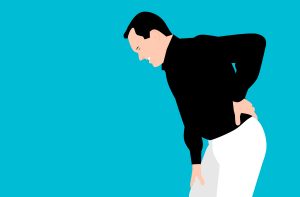
As the pain subsides and the person feels some improvement, activity is slowly resumed. In order to do this, the body will compensate by bending, twisting, and over tightening the superficial muscles to help stabilize the back. Although they can function in this capacity for a while the superficial muscles are NOT well-adapted for this function! These superficial muscles will tire more easily, resulting in impaired normal movement and poor motor control.
This can place abnormal stress on the structures in the spine such as joints and muscles, as well as joints and muscles in other areas of the body, increasing the risk for additional musculoskeletal injuries.
The One Exercise Fix
Doctors of Chiropractic regularly prescribe exercise to address an acute flare-up of low back pain and may suggest general activities, such as swimming or walking, to improve movement and restore normal movement patterns. But, if you had to ask me “What one exercise would I suggest to fix most back pain cases?”, I would suggest McKenzie exercises.
McKenzie Exercises
McKenzie exercises are especially effective for patients who are suffering from an intervertebral disc injury or muscle spasm. They have become a staple in the conservative management of low back pain and entail simple exercises that have very profound impacts on a patient’s low back pain. The term “McKenzie” actually refers to a method of mechanical diagnosis and a series of prescribed therapeutic exercises based on the determined diagnosis by your chiropractor. However, one of the exercises found within McKenzie protocols shines above the rest.
The McKenzie Extension Exercise
McKenzie extension exercises work because they force the spine to go into an extended position. When referencing the lumbar spine this means an “arched” back position, like a person attempting a limbo contest. This arch will actually cause the two vertebrae to close down over the disc at the posterior aspect. This “closing” of the disc space can actually cause the protruding disc material to retract back into the spine and relieve many of the symptoms associated with a lumbar spine disc injury!
Before performing these exercises, there are a few things worth noting:
- While performing the exercises, it is common to experience pain throughout the exercise.
- After multiple repetitions, the pain intensity will often begin to decrease
- If you perform the exercises and the pain gets worse, and stays worse, these exercises may not be right for you.
- If you are experiencing symptoms in your lower extremity, these exercises may also help reduce those symptoms.
 How do we perform these exercises?
How do we perform these exercises?
You can begin these exercises in a standing or prone (on your stomach) position on the floor.
When standing you will put your hands at the base of your spine and drive your hips forward. The goal is to push your hips over your toes or past them. Take the stretch to the point of pain or until you are unable to go any further and repeat.
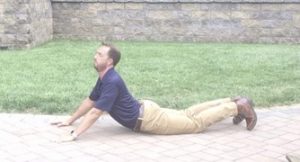 If you are on your stomach, keep your hips on the floor and bring your hands up to your chest as if you are doing a push up. Push your chest up, going as far as you can without lifting your hips. If you are in a lot of pain, you may only move a couple inches. Do not force yourself through the pain. Let each repetition gradually improve your range through these exercises.
If you are on your stomach, keep your hips on the floor and bring your hands up to your chest as if you are doing a push up. Push your chest up, going as far as you can without lifting your hips. If you are in a lot of pain, you may only move a couple inches. Do not force yourself through the pain. Let each repetition gradually improve your range through these exercises.
To see these exercises in action checkout our YouTube page by searching CoreRoanoke, or use this link
Where To Start
A good place to start is with 3 sets of 10 repetitions. If the pain increases after three sets, it may not be the right exercise for your condition. If you experience no change or even mild improvement, perform more repetitions to see if you can create lasting improvement. For many patients these exercises may not only help decrease overall pain but also are useful for mitigating flare ups.
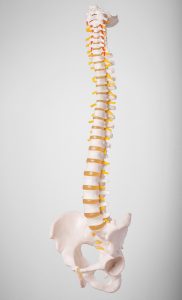
Pay attention to the intensity of the pain as you perform multiples of these extension-based exercises. Is your pain improving? If it traveled to a different part of your body, does the pain travel as far as it did when you began? These exercises may be right for you if you feel improvement in your pain and radicular (traveling) symptoms.
It should be noted that even if symptoms in the lower leg begin to trace back up the leg or decrease, it is not uncommon to simultaneously have increased pain in the low back. It sounds counterintuitive, but increased back pain is not always a bad sign when the pain in your leg is improving!
Typically, when there is radiating pain in the lower extremity, to get rid of the pain completely (from the leg AND back) the leg pain must be eliminated first. While performing these exercises, we often see the pain tracing up the leg towards the back becoming more intense, but over a smaller surface area. The smaller the area of pain, regardless of intensity, the closer you are to abolishing it completely.
Don’t Forget!
Remember, these are just one of many different types of McKenzie exercises! You may require a different direction or progression of exercises. This is a great place to start if you are on your own but remember this: no two backs are alike! It is highly recommended to get a proper evaluation to determine exactly which exercises will treat you best!

Daryl C. Rich, D.C., C.S.C.S., A.R.T.
[Core] Chiropractic and Wellness | Roanoke, VA
CoreRoanoke.com

